JAJSHU7F August 2019 – December 2024 THS6222
PRODUCTION DATA
- 1
- 1 特長
- 2 アプリケーション
- 3 概要
- 4 Pin Configuration and Functions
- 5 Specifications
- 6 Detailed Description
- 7 Application and Implementation
- 8 Device and Documentation Support
- 9 Revision History
- 10Mechanical, Packaging, and Orderable Information
パッケージ・オプション
デバイスごとのパッケージ図は、PDF版データシートをご参照ください。
メカニカル・データ(パッケージ|ピン)
- RGT|16
- YS|0
- RHF|24
サーマルパッド・メカニカル・データ
- RGT|16
発注情報
5.9 Typical Characteristics: VS = 32 V
at TA ≈ 25°C, AV = 10 V/V, RF = 1.24 kΩ, RL = 100 Ω, RS = 2.5 Ω, RADJ = 0 Ω, full-bias mode, and VCM = open (unless otherwise noted)
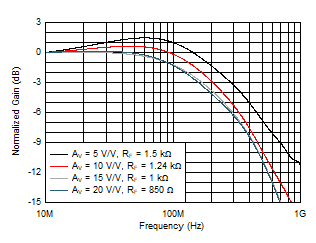
| VO = 2 VPP |
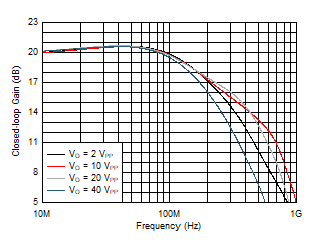
| AV = 10 V/V |
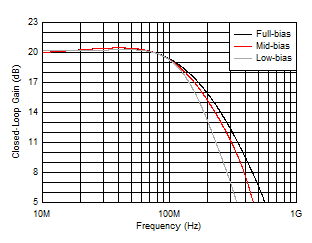
| VO = 40 VPP |
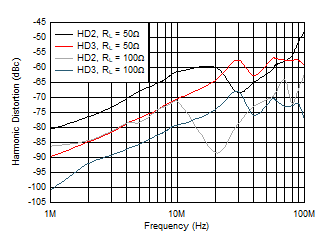
| VO = 2 VPP |
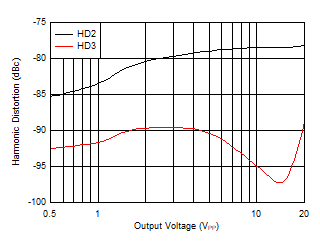
| f = 1 MHz, RL = 50 Ω |
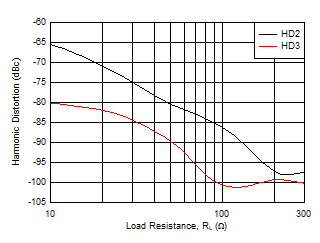
| f = 1 MHz, VO = 2 VPP |
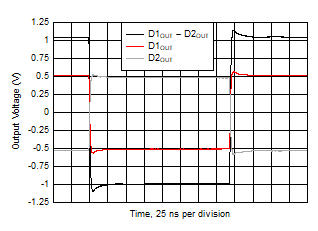
| VO step = 2 VPP |
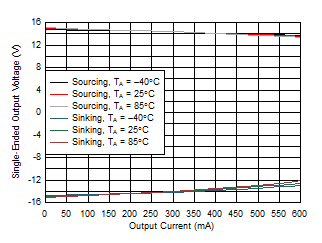
| Average of 30 devices | ||
| Output voltage was slammed and IO was pulsed to maintain TJ as close to TA as possible. |
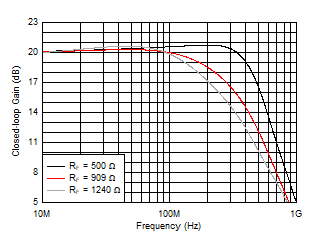
| VO = 2 VPP |
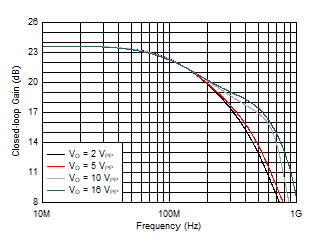
| AV = 15 V/V |
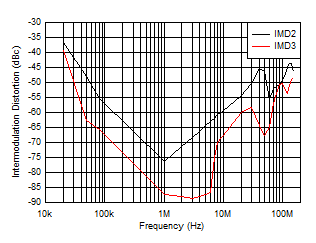
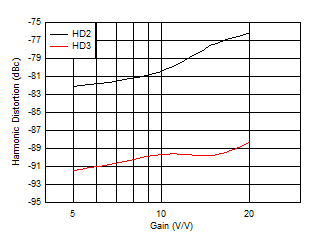
| f = 1 MHz, VO = 2 VPP RL = 50 Ω |
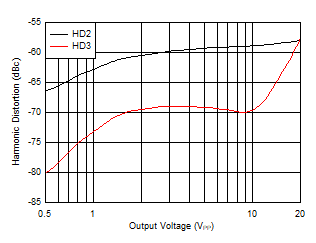
| f = 10 MHz, RL = 50 Ω |
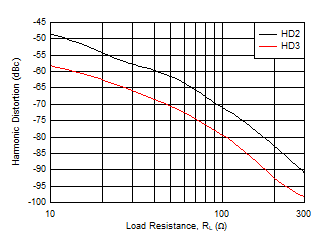
| f = 10 MHz, VO = 2 VPP |
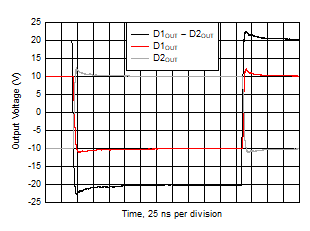
| VO step = 40 VPP |
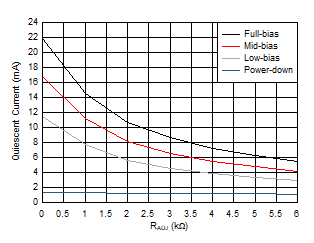
| Average of 30 devices | ||